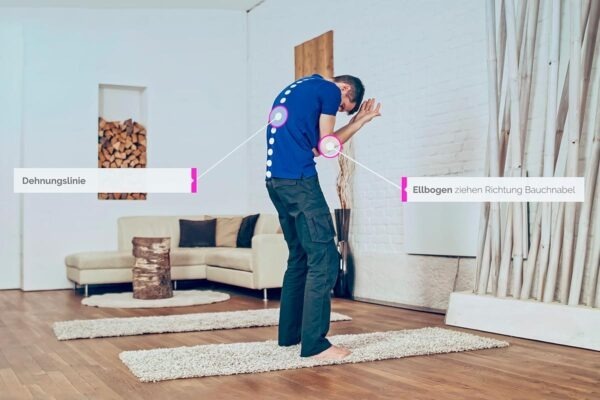Qi Gong Exercise
A foray through the history of TCM
From ancestors and demons
The oldest evidence of a first systematic approach to diseases in Chia dates back to the 11th century B.C. From this so-called Shang period come animal bones and turtle shells with oracle inscriptions. From these, it can be inferred that behind an illness, one always suspected the work of an ancestor who had played an evil trick on one.
It was only understandable that a sacrificial cult arose from this. One wanted to tune the ancestors by the sacrifice again mildly. Thereby harmony in the clan should arise again. The mediator role between the world of the ancestors and the living came to the shamans. They thus became healers.
Around 500 BC, the belief in ancestors was replaced by a belief in demons and their evil play. In that era, many gods beliefs were established. And as in many other religions, each claimed to be the right one. This, of course, gave rise to disputes over many centuries that led to wars. The belief in demons was based on the idea that there are demons who play evil tricks on people.
Barely 200 years later, written records were begun. Now they wanted to systematize and document the knowledge, while here in the West still a magically inspired folk medicine was practiced. The most famous work from this time is the Huangdi neijing, the "Inner Classic of the Yellow Emperor". This is one of the first medical works of mankind. It dealt with the human blood circulation. This knowledge was not recognized in Europe until the 16th century.
The pharmacopoeia "Shen-nung pen-tsao" also dates from this time. Here remedies were divided into categories for the first time. Around 90 BC, the treatment of diseases with needles was mentioned for the first time. This was the official beginning of acupuncture, one of the most important pillars of TCM.
The fact that the Chinese art of healing was constantly developing is attested to by documents found in tombs. They date back to 168 B.C. and already describe in great detail various mixtures of medicines. They also talk about the basics of diagnosis and mention numerous treatment options such as meditation, gymnastic exercises, breathing exercises, baths, massages and even minor surgery.
Learning through observation of nature
Around 220 BC, scholars developed the theoretical foundations that would lead to the development of Chinese medicine over the next 3 centuries. The whole world of appearances was ordered. This is also how the knowledge of the 5 elements came into being, because they can be observed in nature. Also the interplay of going and passing was observed and led to the Yin-Yang theory.
Unlike our Western thinking, which focuses more on details, Eastern thinking is more interested in the totality of nature and the big picture. So there is no separation of body, mind and soul. These form a unity. Also that in nature everything is constantly in motion, was transferred to the body. Also in us everything must be able to flow. The blood, the lymph and last but not least the life energy, the famous Qi. This Qi in turn must be able to flow freely between 2 poles. There must not be too much and not too little Qi. Otherwise a disease can develop from it. The Qi in turn flows on the meridians. These are pathways that run through the body and connect everything together. There are 12 main meridians, which are connected to the organs in turn. On the meridians were discovered the acupuncture points, which offer the possibility to influence the Qi of the body.
The knowledge grows
The medicine developed continuously. Already during the Tang period (618-906 AD) it was possible for doctors to treat deficiency diseases caused by malnutrition. The European peoples had to wait a long time for this. This was also the beginning of dietetics, if you will. Different schools developed, depending on culture and region, some of which had very different orientations. However, they all had in common that they derived their knowledge from observation and experience. All senses were specifically used and the knowledge of Yin and Yang and the 5 elements formed the basis.
Here in Europe, the Eastern knowledge became known from the 17th century. The Chinese treated diseases with herbs, nutrition and with needles. Imagine how amazed the Western physicians must have been by this. The interest in acupuncture was to grow even stronger the following centuries. At the beginning of the 19th century, Western physicians sought an exchange with Chinese physicians. Unfortunately, this fruitful contact was interrupted only a few decades later by the Opium War and the Boxer Rebellion.
One-sided strengthening of the soul without culture of the body is the first mistake - but one-sided formation of the body without culture of the soul can keep you in the yin state for several lifetimes.
Chinese proverb
TCM falls into oblivion
During this time, the conviction of the economic and medical superiority of the West developed in China. In the West, huge advances were made in medical technology. Surgery performed ever more impressive feats. There were more and more possibilities to treat even severe diseases. Soon, Chinese medicine looked very old and backward. The way out of this dilemma was to adopt Western medicine and discard traditional knowledge. This remained the case for the time being. It was not until the founding of the Chinese Republic in 1949 that the traditional values and forms of treatment were recalled and Chinese medicine regained its prestige. Since then it has been called "Traditional" Chinese Medicine. However, it remained exclusively limited to China. Emigrants then gradually exported TCM to the USA and Europe. It was not until the opening of China under Deng Xiao ping at the end of the 1960s that the exchange with the West was promoted.
From mysticism to empirical science
Before the Chinese art of healing became what we understand it to be today, it was dominated by a mystically dominated belief in demons. Everything was caused by evil spirits. Only with the implementation of Daoism as a natural philosophy and Confucianism as a state doctrine, this slowly changed and the demon belief was replaced. The founder of Daoism was the philosopher Li-er, known to us as Lao-the, who lived around 480 - 390 BC. Lao-tse understood the Dao, or Tao, as the divine origin from which the world arose and to which all things return. In Daosimus, man is understood as a part of nature and therefore cannot be separated from it. The goal of the doctrine is to live a life based on simplicity and naturalness. All that a Daoist strives for is the achievement of immortality or at least the extension of the earthly life span. To achieve this, they developed various methods such as Qi Gong and meditation. Diet is also very important in Daoism.

























